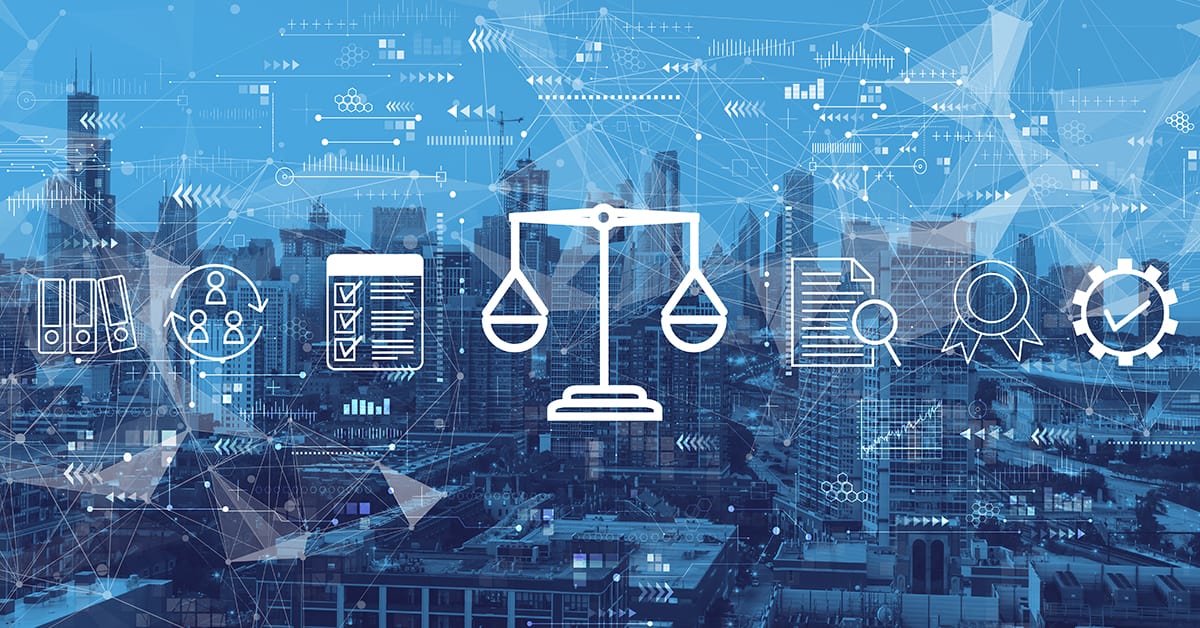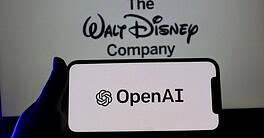Global law firms are following finance in adapting to technology’s efficiencies. Corporate clients demand it.

Lawyers are not supposed to “move fast and break things.” They are a stabilizing force, making sure that innovation conforms to the established rules of business and society and leaves no costly “i” undotted. As an institution, the judiciary has a built-in resistance to rapid change.
Lawyers are also a huge cost center that is ripe for some economy. Legal departments and firms remain pantheons of paperwork. Reams of nearly identical documents are processed by expensive human hands and pile up in hard copy. Global spend on legal services weighed in at $729 billion last year, according to Statista Research. That’s bigger than the gross domestic product of Saudi Arabia.
Now, technology and fresh thinking—boosted by the coronavirus—are finally bringing reform to law firms. “Changes you saw in HR 10 years ago, and finance seven years ago, are finally getting to the general counsel’s office,” says Cornelius Grossmann, Berlin-based global law leader at EY. “The pandemic is truly an accelerator.”
The first fruits of change already look abundant and global. A few examples:
US freight railway Norfolk Southern squeezed $2 million out of its annual legal budget, mostly through a more scientific approach to outside law-firm costs. “We are really focused on using data analytics for bill review and pushing for flat-fee arrangements,” says April Savoy, head of legal operations.
Kennedys Law, a UK-based firm specializing in insurance, has cut its clients’ lawsuits 50% by routing claims through a self-designed automated system, KLAiM, rather than argumentative human attorneys. “We’ve seen litigation halved because we are using software instead of lawyers,” partner Richard West says.
Indian law firm Cyril Amarchand Mangaldas recently graduated the first class of startups from its legal-tech incubator. One of the promising projects: an artificial intelligence (AI) system that calculates a suit’s odds of success based on the presiding judge’s past decisions. “AI-based lawyering is the revolution yet to come,” says Cyril Shroff, the firm’s managing partner.
Think of it this way, says Wendy Butler Curtis, chief innovation officer at the Orrick firm in Washington: Law has been stuck in the rough equivalent of a bank-teller paradigm. Clients reflexively “call the lawyer” for anything entailing a signature. It’s now moving, laboriously, to an ATM equivalent. Basic services, from updating contracts to discovery interrogatories, will increasingly be automated.
These changes in process will change the profession for the better, she argues. Attorneys will check fewer boxes and be less segregated from the businesses they serve. They will be more integrated into C-suite strategy on M&A, technology adoption, government relations and other exciting matters. “We’re entering the age of the T-shaped lawyer, who has technical and business expertise and practices at the top of their license,” Curtis proclaims.
Maybe, but the road to get there is complex. The first, primary targets for legal reformers’ lofty ambitions are those humble pieces of paper that pile up by the millions with signatures at the bottom. Contracts are the motor of all formal commerce, enabling transfer from buyer to seller and cooperation in complex undertakings. Lawyers are indispensable as both engineers and mechanics, designing contracts and maintaining them in working order.
Contracts are also highly standardized and frequently need to be amended en masse to reflect changes in regulation or other external conditions. That’s where lawyers can become dispensable and software can save a lot of money. “Say you need to change thousands of financial agreements from Libor to IBOR,” Grossmann says, referring to shifting interest-rate benchmarks. “You don’t need a securities lawyer for that. It’s like sending a Ferrari to get the bagels.”
A more complex challenge falls under the heading of contract life-cycle management. Agreements between real estate developers and builders, for instance, may stretch forward for years, with multiple deadlines involving penalties for missing them or rewards for coming in early. It’s hard for human beings to keep track of these, so one side or another tends to cheat itself, says Daniel Reed, CEO of New York-based legal consultant UnitedLex. “Typically a contract goes into a drawer, and you see 8%-12% revenue leakage over the course of it,” he asserts. He and competitors in the fast-growing “legal solutions” field are in a race to design systems that can plug some of these leaks. None has broken through with an industry standard yet, but they are working hard.
Paul Lippe, CEO of one of those rivals, Massachusetts-based xMentium, likens the contract life-cycle sphere to the creation of Google Maps: “First you create a database of all the roads,” he explains, meaning the standard clauses and obligations that are the building blocks of most contracts. “Then you add the dynamic layer and the real-time layer,” he adds. “Finally you know that the Arby’s in Nebraska closes at 6:00 p.m.” A little abstract for the uninitiated to grasp, maybe. But something to think about.
The “creeping tsunami” of legal disruption, as Reed puts it, is also lapping at the profession’s second core function: dispute resolution. Lawsuits cannot be templated to the same degree as contracts. But perennial defendants like insurance companies, or even a freight carrier such as Norfolk Southern, see enough of them that standard bits can be extracted and automated, saving valuable attorney time and trips to the courtroom. “We just reached our 10,000th defense through the KLAiM system,” Kennedys’ West says. “It frees lawyers from repetitive tasks for higher-level work.”
Kennedys, which has spread by acquisition to 24 countries around the world, is looking for the next big thing in insurance-law tech through its own international Ideas Lab. Far-flung attorneys and other employees have pitched more than 100 useful reforms since the project launched in 2017. The firm instituted a formal contest last year. The winner was then investigation services head Chris Stubbs for an AI-driven fraud-detection tool.
Kennedys’ UK neighbor, Allen & Overy, took the lab idea further by seeding external legal tech startups through an incubator called Fuse. This structure nurtures five to 10 up-and-comers every year. The 2020 cohort included names like StructureFlow, which creates dynamic visual diagrams of complex legal structures and transactions that parties can share and alter; and Loan Optics, which “helps to make the syndicated loan market more digitally native.”
Finding a Sweet Spot
For disputes that may lead to litigation, venue—the state or province and the particular judge who will hear the matter—can be critical to the outcome. Venue shopping is an ancient art for attorneys, but modern data crunching is advancing it to a science, whether in India or the US. While Shroff’s proteges digitize decisions from India’s 36 states and union territories, Norfolk Southern and Orrick are studying similar tools across the 50 states of the US. “If you know that filing a motion costs $20,000 and you only have a 10% chance of winning with this judge, you may not file it,” Orrick’s Curtis explains. Leveraged across Norfolk Southern’s dispute volume, this sort of calculation “could potentially save seven figures,” Savoy of Norfolk Southern adds.
Technology is also attacking the laborious discovery process that attends any litigation. If you have ever wondered how internal company emails and texts routinely turn up in court these days, along with traditional records that could date back decades, the answer is that the opposing party demands them, setting off an expensive search process. E-discovery systems, as they are known, keep getting better at gathering relevant information without human labor, though they are still a long way from the simplicity of Google. “Electronic discovery tools are another area in high demand,” Curtis says.
Better technology may also mean less work farmed out to external law firms, the profession’s traditional elite. It will certainly mean more-rigorous scrutiny of their hefty fees. The billable hour is not exactly dead, says Daniel Haley, general counsel at Boston-based software producer Sprinklr. (“It’s the worst system in the world except all the others,” he jokes.) But clients are fast building data tools that enable them to pinpoint market prices for different chunks of services and haggle over them. “A huge structure is growing up on both sides to argue over the bill,” Haley says.
Clients are also increasingly pushing work toward alternative legal service providers (ALSPs), a somewhat vaguely defined but burgeoning sector. “ALSPs are a multibillion dollar industry and growing 20%-40% a year, says Grossmann. (He happens to oversee one of the bigger ones, at EY.) “The description covers everything from paralegals to pure-technology companies.”
High-priced outside counsel is not heading for extinction anytime soon. “Law firms will never go away for very high-dollar, multijurisdictional cases, or for complex emerging issues where they can provide thought leadership,” Norfolk Southern’s Savoy says.
But their proportion of legal spend may shrink, and they will become more specialized. “The first variable when you take over a legal department is taking a careful look at your internal to external spend ratio,” says Bjarne Tellmann, general counsel at GSK Consumer Healthcare, a joint venture between pharmaceutical multinationals GSK and Pfizer. “The second is matching the right law firm with the right work, not just doing it based on longstanding relationships.”
To which the high-priced law firms say, Bring it on! (At least those firms keen to be interviewed for this story.) “The robots will remove tasks that lawyers don’t enjoy doing,” Orrick’s Curtis says. “If you’re a brain surgeon, you don’t draw blood.” She’s happy to say good riddance to the billable hour, too. Price certainty is the new paradigm. “If I can use all the $1 million fee on what matters to my client, I’ll outperform every time,” she promises.
To Shroff in Mumbai, pressure on external law firms spells opportunity to beat his competitors. “The pandemic has driven a flight to quality,” he says. “Everybody needs exceptional talent and recognizes that this is expensive talent.”
If a great storm is really descending on the legal profession, technology might be visualized as the driven rain. The wind driving it is a shift in philosophy: that law should be treated like other corporate functions, subject to the same stringent cost/output measurement and relentless press for economy. The boss riding herd on this process may not even have a law degree. “We are seeing the advent of legal operations as a job,” Sprinklr General Counsel Haley says. “The very first hire I made here was a legal ops director.”
Not all attorneys will like this change. “Lawyers tend to believe that everything they do is a work of art,” EY’s Grossmann says. The global law centers in the US and UK are adapting fastest to demystification, he says. Other places cling more to tradition. “A lot of the firms in Europe and Asia don’t understand the risk they’re running in not upgrading the way they work,” GSK Consumer’s Tellmann says.
But there are legitimate contradictions in running legal like any other part of a business. Lawyers prove much of their worth in what they prevent from happening: liability exposure, expensive contract loopholes or regulatory compliance failures. Output per attorney is a crude measure at best. Shifts in environment, like the current global wave of data and privacy regulation, may demand more lawyering even if corporate revenue isn’t growing to match. “There’s no clear answer to how you measure the success of a legal department,” says Haley. “So much of what a legal department deals with is things you couldn’t possibly have foreseen.”
Corporate bosses need to understand the lawyer’s unique viewpoint when pushing for change. “When a CEO asks, ‘What are your KPIs [key performance indicators]?,’ you can either come up with something to scratch the itch or seriously look at how you’re spending your resources,” Haley says.
Lawyers, being lawyers, can be skilled at foot-dragging and covering their behinds. “There’s a tendency to say, ‘It’s not our fault that the whole acquisition was a writeoff. We checked all the semicolons,’” Lippe notes. Lawyers whose hearts and minds are engaged by the business can be a powerful, if intangible, asset. Coming reformers need to bear that in mind even as they take a knife to costs.



